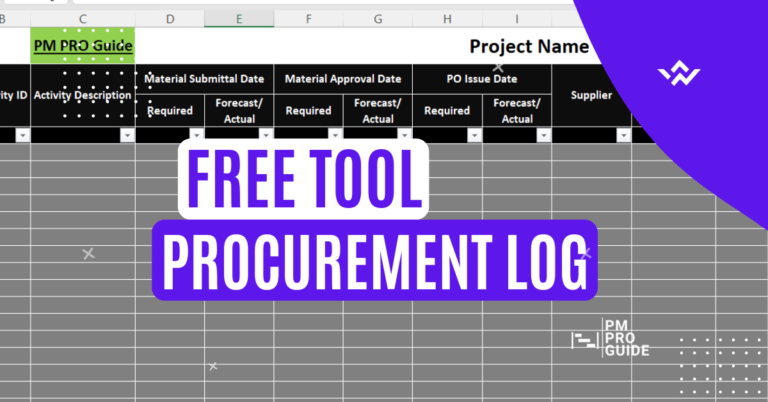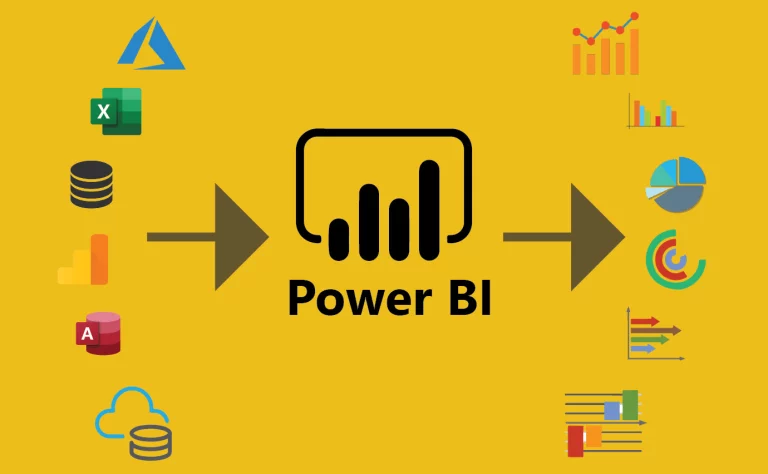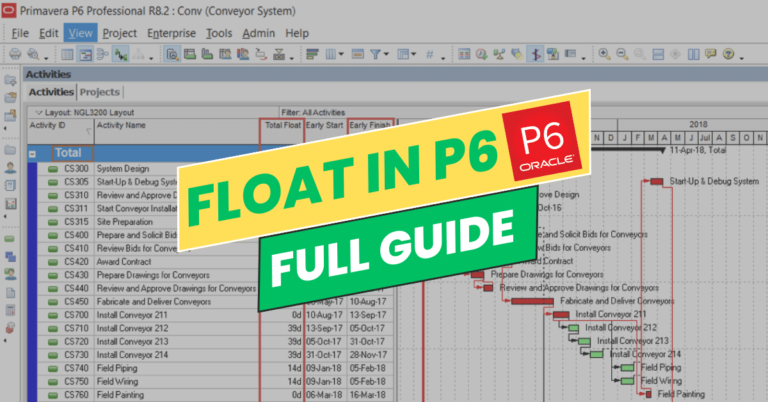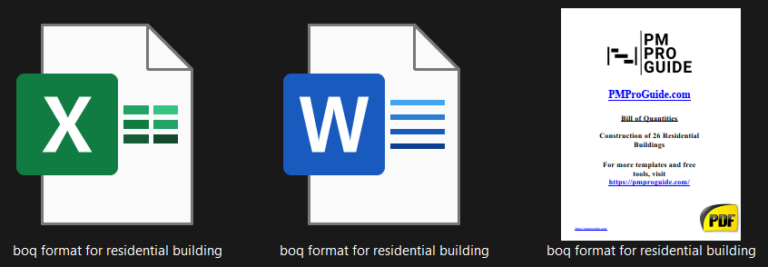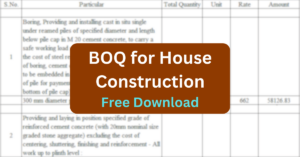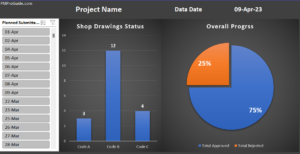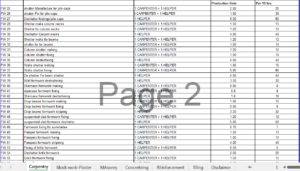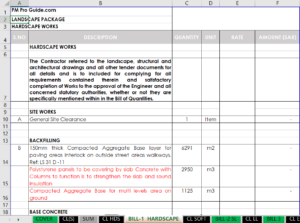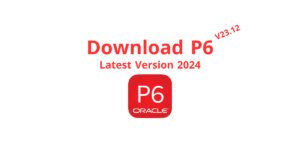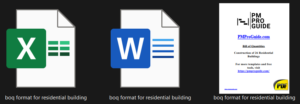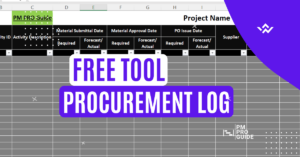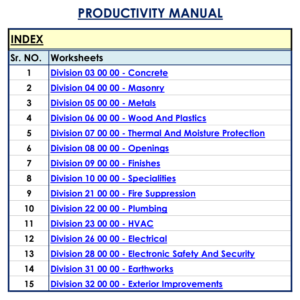In the world of construction projects, the Bill of Quantities (BoQ) stands as a pivotal document, orchestrating the harmony between planning and execution. Let’s delve into the depths of this indispensable tool that architects, contractors, and project managers rely on to ensure the smooth progression of construction endeavors.
Table of Contents
Introduction
What is a Bill of Quantities?
The Bill of Quantities is a comprehensive document that outlines the materials, labor, and other resources required for a construction project. It serves as a roadmap, guiding stakeholders through the intricacies of the project’s cost management.
Importance in Construction Projects
A well-structured BoQ is the linchpin of any construction project. It not only facilitates accurate cost estimation but also plays a crucial role in the tendering process, ensuring transparency and fairness.
Components of a Bill of Quantities
Preliminaries
The preliminary section of a BoQ includes general project information, such as project location, contract details, and other essential particulars. It sets the stage for the subsequent detailed breakdowns.
Work Sections
Dividing the project into workable sections is a cornerstone of effective BoQ creation. This involves categorizing tasks and allocating resources systematically.
Measurement Units
Accurate measurement units are crucial for precise cost estimation. BoQs utilize standardized units for consistency and clarity.
Pricing
Determining the cost of each unit is a meticulous process. Pricing involves assigning monetary values to materials, labor, and other resources, ensuring a comprehensive overview of project expenses.
Creating a Bill of Quantities
Gathering Project Information
Before embarking on the BoQ journey, a thorough understanding of the project’s scope, objectives, and specifications is imperative. This initial step lays the foundation for an accurate and relevant BoQ.
Breaking Down the Project
Work sections are created by breaking down the project into manageable components. Each section is carefully analyzed, ensuring that nothing is overlooked.
Assigning Measurement Units and Quantities
Precise measurement units and quantities are assigned to each component. This step demands attention to detail, avoiding miscalculations that could lead to cost discrepancies.
Estimating Costs
With all elements in place, the final step involves estimating costs. This process involves meticulous calculations, taking into account material costs, labor expenses, and other relevant factors.
Role of Bill of Quantities in Project Management
Budgeting and Cost Control
One of the primary roles of a BoQ is to aid in budgeting and cost control. Project managers rely on it to ensure that the project stays within the allocated budget.
Tendering Process
During the tendering process, contractors use the BoQ to submit accurate and competitive bids. This fosters a fair and transparent selection process.
Resource Allocation
Efficient resource allocation is streamlined through the use of BoQs. Contractors can identify the exact quantities and types of resources needed, preventing shortages or wastage.
Advantages of Using Bill of Quantities
Transparency
BoQs promote transparency by providing a detailed breakdown of costs. This transparency fosters trust among stakeholders, ensuring a smoother project lifecycle.
Cost Accuracy
The meticulous nature of BoQ creation ensures a high level of cost accuracy. This precision is invaluable in preventing unexpected financial surprises during the construction process.
Easy Comparison of Tenders
Comparing tenders becomes a straightforward process with BoQs. Contractors can assess bids based on the same set of criteria, simplifying the decision-making process for project owners.
Challenges and Solutions in Bill of Quantities
Inaccuracies in Initial Estimates
Despite its precision, BoQs can face challenges arising from inaccuracies in initial estimates. Regular updates and reviews can help mitigate this issue.
Changes in Project Scope
Changes in project scope can disrupt the accuracy of BoQs. Flexibility and adaptability in the BoQ process are essential to accommodate alterations without compromising accuracy.
Technology Solutions for Accurate BoQs
Embracing technology can enhance the accuracy of BoQs. Utilizing construction management software and Building Information Modeling (BIM) integration can significantly reduce errors.
Importance in Cost Estimation
Ensuring Project Feasibility
A well-prepared BoQ contributes to project feasibility by offering a realistic overview of costs. This aids decision-makers in assessing the viability of the project.
Avoiding Cost Overruns
Effective cost estimation through BoQs helps in avoiding cost overruns, a common concern in construction projects. Project managers can track expenses closely, ensuring adherence to the budget.
Common Mistakes in Bill of Quantities
Overlooking Details
The devil is in the details, and this holds true for BoQs. Overlooking even minor details can lead to significant discrepancies in cost estimates.
Inconsistent Units
Consistency in measurement units is paramount. Inconsistent units can lead to confusion and errors in calculations, undermining the accuracy of the entire BoQ.
Lack of Clarity
A lack of clarity in the BoQ can create misunderstandings and disputes. Clear and concise communication through the BoQ is essential for project success.
How to Read and understand a BOQ?

Typical BOQ consists of the following:
BOQ Reference
It’s a serial number for each line in the BOQ to make it easy to refer to any item and to use it in the files instead of writing the whole description.
Item Description
Simply it describes the boq item clearly. It describes what is going to be done and what is the quantity and type of material and any specific information about the material.
Quantity
After describing the item, we should tell its quantity. Here we tell the quantity as a number only, and the unit will be described later in the next column. We do this basically to be able to filter later all the items that share the same units to sum their quantity for example.
Rate
Here we tell what is the price per 1 unit of that BOQ item.
Amount
The amount section represents the total price of the BOQ. It normally equals the multiplication of the quantity times the rate.
Free Bill of Quantity Templates
You can start practicing with these BOQ templates provided by PM Pro Guide for free
BoQ Format for Residential Building Excel and PDF (Free Download)

